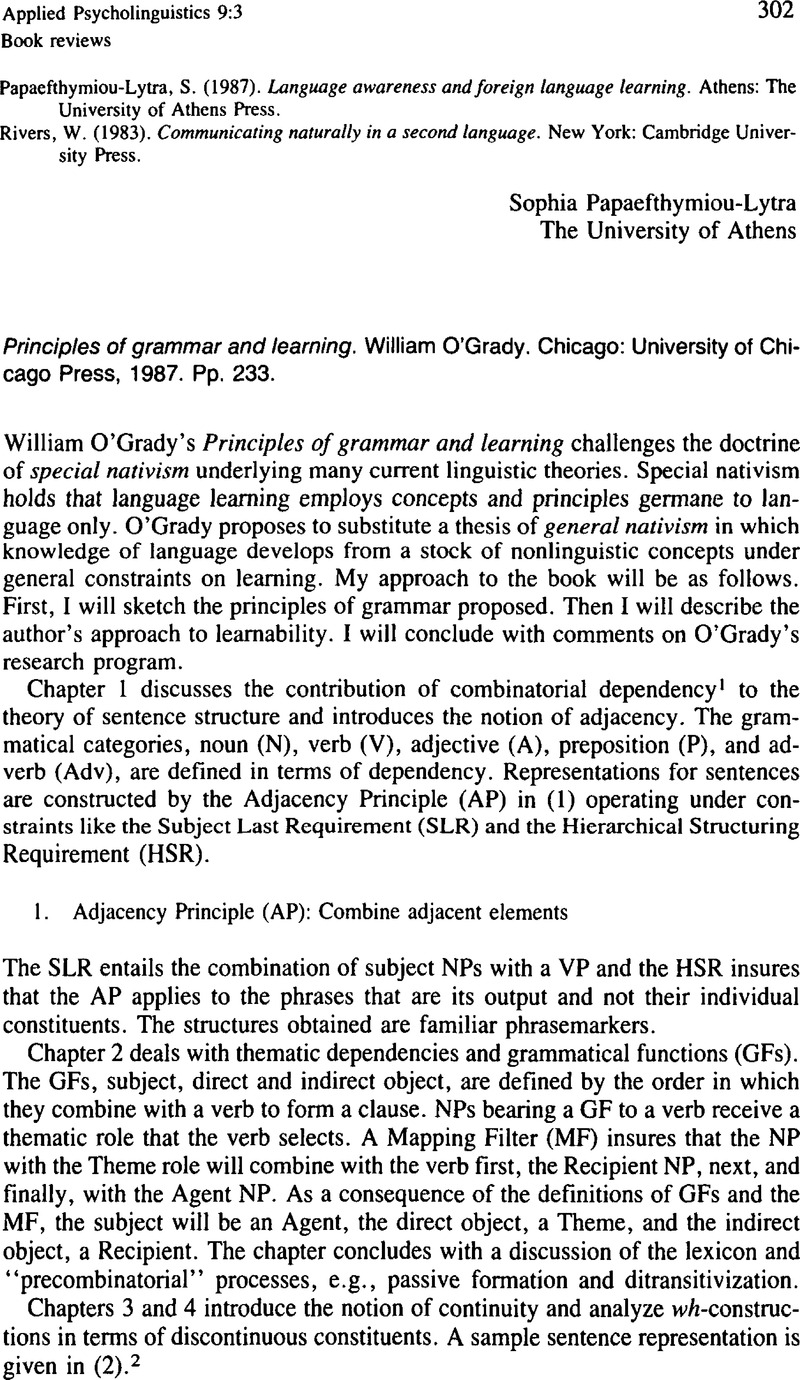No CrossRef data available.
Article contents
Principles of grammar and learning. William O'Grady. Chicago: University of Chicago Press, 1987. Pp. 233.
Published online by Cambridge University Press: 28 November 2008
Abstract
An abstract is not available for this content so a preview has been provided. Please use the Get access link above for information on how to access this content.

- Type
- Book reviews
- Information
- Copyright
- Copyright © Cambridge University Press 1988
References
REFERENCES
Berwick, R., & Weinberg, A. (1984). The grammatical basis of linguistic performance. Cambridge: MIT Press.Google Scholar
Huang, J. (1982). Logical relations in Chinese and the theory of grammar. Unpublished dissertation, Massachusetts Institute of Technology.Google Scholar
Jakubowicz, C. (1984). On markedness and binding principles. In Jones, C. & Sells, P. (Eds.), Proceedings of NELS, XIV. Amtierst: University of Massachusetts.Google Scholar
Kayne, R. (1980). Two notes on the NIC. In Belletti, A., Brandi, L., & Rizzi, L. (Eds.), Theory of markedness in generative grammar. Pisa: Scuola Normale Superiore.Google Scholar
Landau, B., & Gleitman, L. (1985). Language and experience. Cambridge: Harvard University Press.Google Scholar
Lasnik, H., & Saito, M. (1984). On the nature of proper government. Linguistic Inquiry, 15, 235–291.Google Scholar
Otsu, Y. (1981). Universal grammar and syntactic development in children: Toward a theory of syntactic development. Unpublished dissertation, Massachusetts Institute of Technology.Google Scholar
Pinker, S. (1984). Language learnability and language development. Cambridge: Harvard University Press.Google Scholar
Ross, J. (1967). Constraints on variables in syntax. Bloomington, IN: IULC Linguistics Club.Google Scholar
Wexler, K. (1982). A principle theory for language acquisition. In Wanner, E. & Gleitman, L. (Eds.), Language acquisition: The state of the art. Cambridge: Cambridge University Press.Google Scholar
Wexler, K., & Chien, Y.C. (1985). The development of lexical anaphors and pronouns. Papers and Reports on Child Language Development, 24, 138–149.Google Scholar
Wexler, K., & Culicover, P. (1980). Formal principles of language acquisition. Cambridge: MIT Press.Google Scholar


